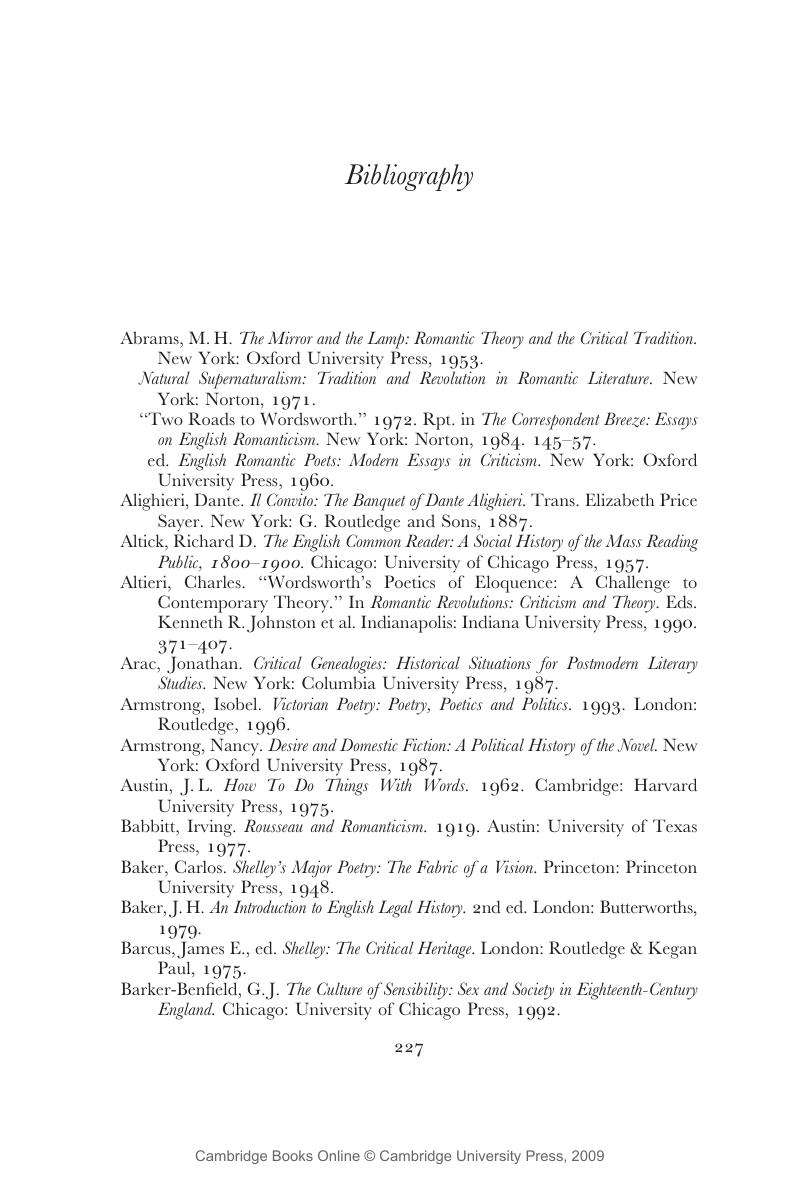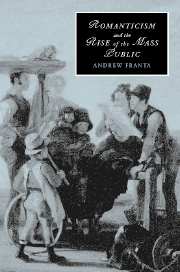Book contents
- Frontmatter
- Contents
- Acknowledgments
- Introduction: The regime of publicity
- 1 Public opinion from Burke to Byron
- 2 Wordsworth's audience problem
- 3 Keats and the review aesthetic
- 4 Shelley and the politics of political poetry
- 5 The art of printing and the law of libel
- 6 The right of private judgment
- Notes
- Bibliography
- Index
- CAMBRIDGE STUDIES IN ROMANTICISM
- References
Bibliography
Published online by Cambridge University Press: 22 September 2009
- Frontmatter
- Contents
- Acknowledgments
- Introduction: The regime of publicity
- 1 Public opinion from Burke to Byron
- 2 Wordsworth's audience problem
- 3 Keats and the review aesthetic
- 4 Shelley and the politics of political poetry
- 5 The art of printing and the law of libel
- 6 The right of private judgment
- Notes
- Bibliography
- Index
- CAMBRIDGE STUDIES IN ROMANTICISM
- References
Summary

- Type
- Chapter
- Information
- Romanticism and the Rise of the Mass Public , pp. 227 - 240Publisher: Cambridge University PressPrint publication year: 2007



